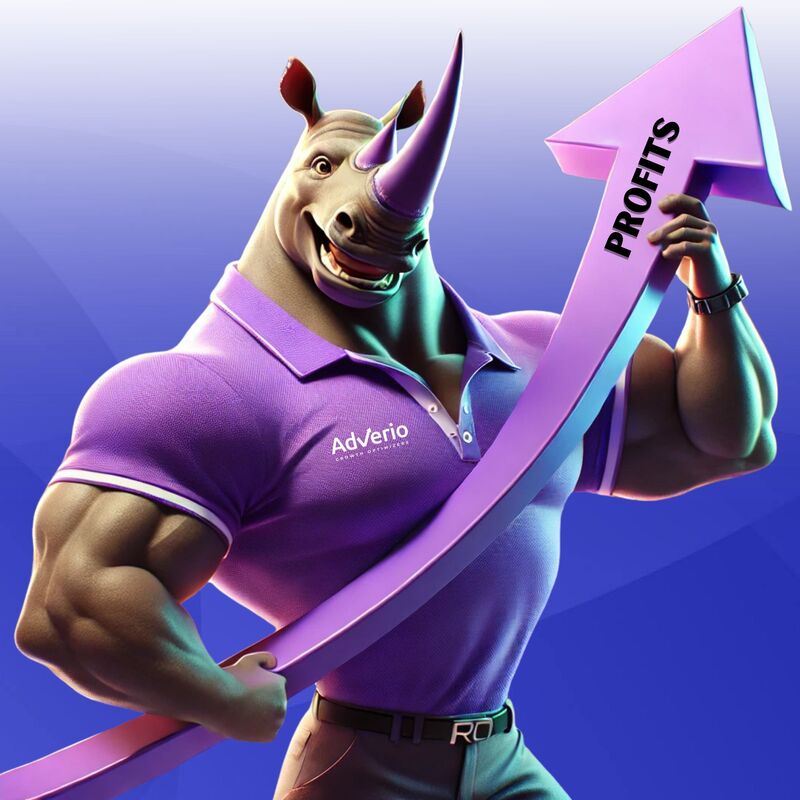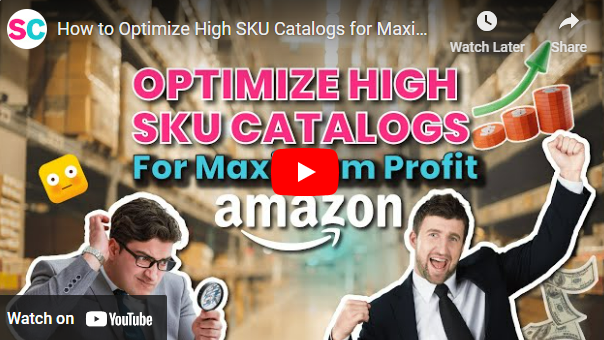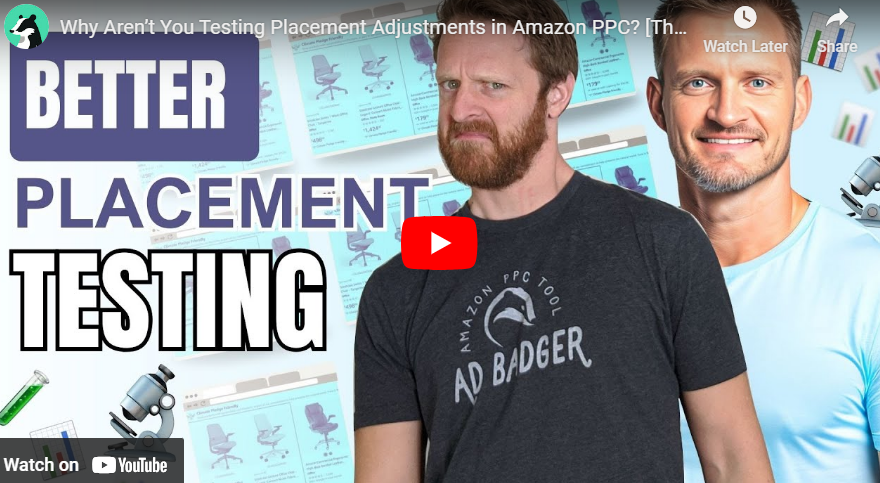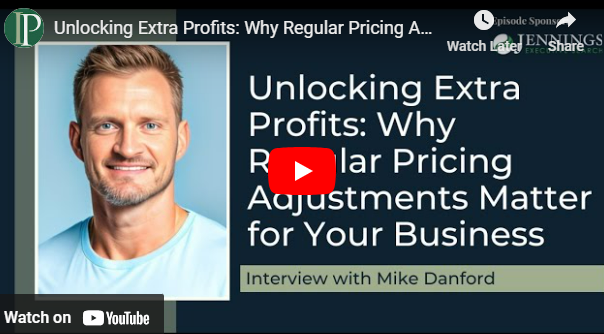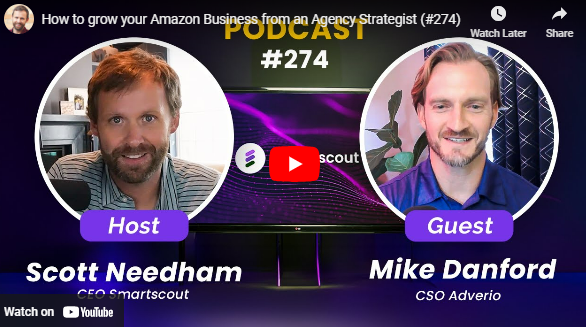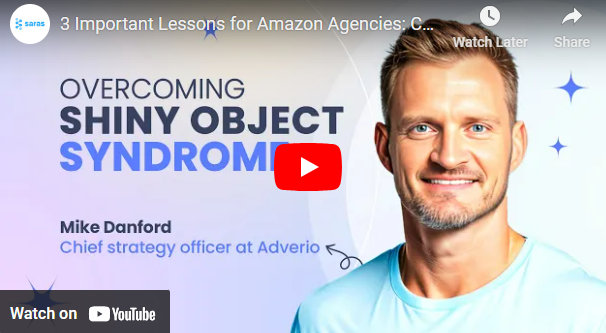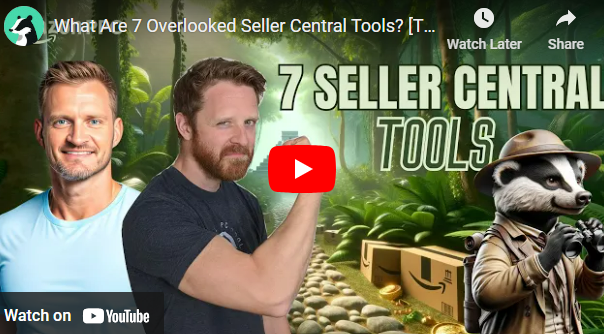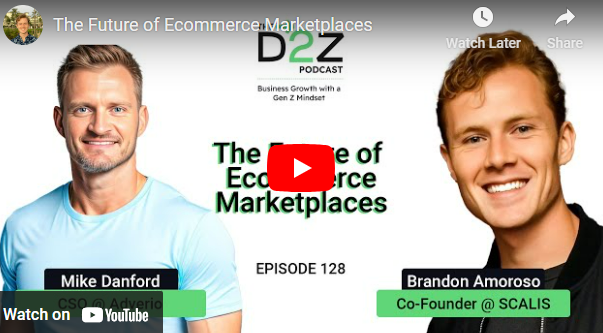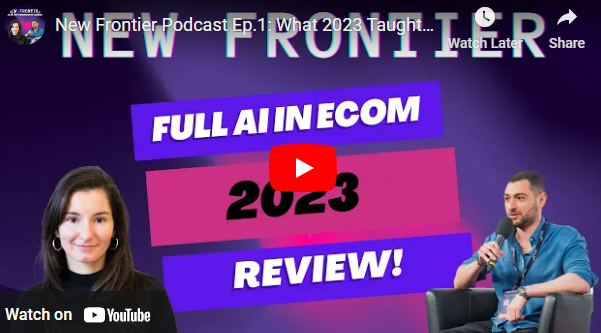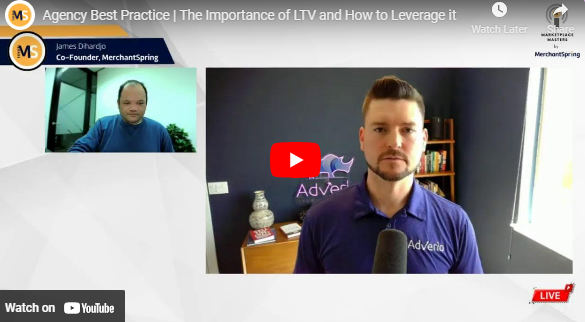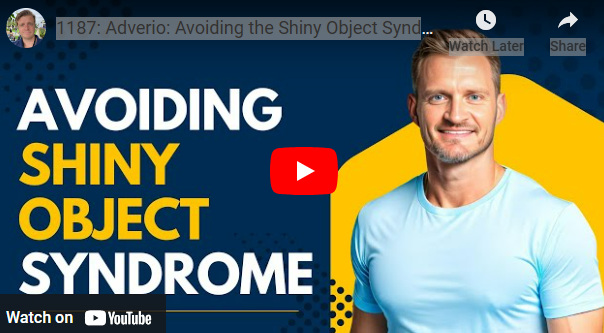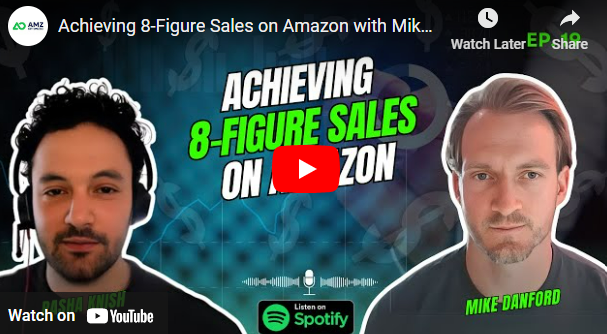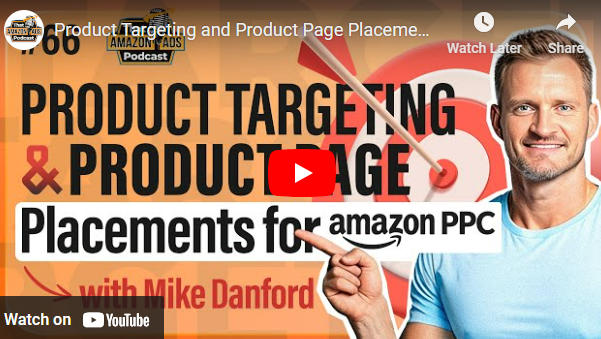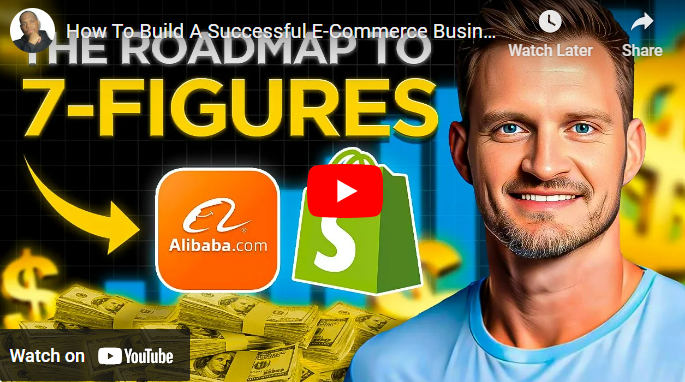Impact Pricing
Win more deals at higher prices by understanding VALUE
In this podcast, Mike shares valuable insights on optimizing pricing strategies for businesses, emphasizing the importance of testing and adjusting prices regularly to stay competitive. He discusses the complexities of Amazon’s Buy Box. He also provides practical advice for businesses with tight margins, highlighting how small pricing adjustments can lead to significant improvements in profitability, especially when using dynamic pricing strategies.
What this podcast covers :
- 01:36 – What paved his entry into pricing
- 02:21 – Explaining how in B2C dynamic pricing is critical to staying competitive across platforms like Amazon and Walmart, where frequent promotions and price changes impact rank and visibility
- 03:27 – Defining ‘Omnichannel’
- 03:59 – How brands sell through these omni channels and how brick-and-mortar sales data can be integrated with online data to enhance omnichannel strategies
- 05:03 – ‘Omnichannel pricing’ and the challenges that comes with it
- 07:20 – A strategy used to avoid direct price comparison
- 07:45 – Strategies for effective omnichannel pricing to maximize sales
- 12:00 – Describing how price adjustments are often small, typically starting below 3% to gauge elasticity
- 13:52 – The three main buckets of categorizing pricing strategy
- 16:15 – Explaining Amazon’s automated pricing tools and third-party repricing software that generally adjust prices dynamically
- 18:55 – How the Amazon buy box has been a competitive issue since the platform’s early days
- 21:20 – Hourly changes being typically unnecessary unless there’s exceptionally high product turnover
- 23:25 – How geolocation-based pricing isn’t possible on major marketplaces
- 25:08 – Maintaining control over the buy box on Amazon
- 26:27 – Mike’s best pricing advice
[00:00:00] Mike Danford: If you haven’t tested pricing, do it today. Don’t wait. There’s no better time than right now. If you tested it a year ago and you haven’t touched it, or you did it six months ago, do it again. The market is constantly changing. Be willing to make those small changes.
[00:00:19] Mark Stiving: So we’ve established my proposal is sound in principle, now we’re just haggling over price. Let’s see how much we’re going for in eBay. It’s the same as Dunkin Donuts.
Today’s podcast is sponsored by Jennings Executive Search. I had a great conversation with John Jennings about the skills needed in different pricing roles. He and I think a lot alike. If you’re looking for a new pricing role, or if you’re trying to hire just the right pricing person, I strongly suggest you reach out to Jennings Executive Search.
They specialize in placing pricing people. Say that three times fast. Welcome to Impact Pricing, the podcast where we discuss pricing, value, and the quantitative relationship between them. I’m Mark Stiving, and our guest today is Mike Danford. Here are three things you want to know about Mike before we start.
He is the CSO at Adverio. It’s an omni channel growth company. Can’t wait to hear what the heck they actually do. Uh, he spent several years in the insurance industry. And he’s a hybrid athlete, uh, emphasizing strength training and endurance running. And I am so jealous. Welcome, Mike.
[00:01:32] Mike Danford: Thanks for having me, Mark.
Looking forward to it.
[00:01:34] Mark Stiving: It’s going to be fun. How’d you get into pricing?
[00:01:38] Mike Danford: Well, a lot of brands that will come to us, uh, you know, everybody’s focused on advertising, marketing, et cetera. And we work with large catalogs and we run up kind of came up with a pricing audit. And it’s pretty common to find out that they don’t change prices and it could be years or they don’t try to keep up with the market trends, etc.
Um, and then we thought it’s a way to kind of help revamp and kind of boost the product lifecycle or pull it out of a decline. So, um. Uh, my original first foray into it was actually repricing because I was a reseller on Amazon and it’s obviously changed since then with algorithmic updates and whatnot.
So
[00:02:17] Mark Stiving: it seems to me, I work a lot in the B2B space, but it certainly seems to me that in B2C. People are changing prices all the time. Am I missing that?
[00:02:28] Mike Danford: No, you’re exactly correct. And it seems to be more important now than ever. Uh, you know, different platforms will have sells, uh, site wide or otherwise. And then you’ll have, you know, individual brands will run promotions or somebody will change and you have to kind of follow it or you lose your rank, um, in your comparative conversion, et cetera, than those other brands on that platform.
I feel like it’s less, it’s a slower, less reactive. Environment when you’re on your data, see your own website where you’re not directly against competitors price comparison right beside each other. I think you can be a little more dynamic. Um, and then I’ve mentioned the other pieces. If you’re on omni channel, you’re on walmart or amazon plus.
Macy’s, et cetera, they’ll run promotions on those other sites and the major marketplace will actually remove you from being able to be purchased in the buy box if you don’t follow those prices. So there’s, there’s a lot of factors now, way more factors than there ever have been.
[00:03:26] Mark Stiving: Yeah. Yeah. So. We don’t talk about this much on this podcast, so define for us Omnichannel, and then, uh, and then give us an example that, that you work in that we would all be familiar with.
[00:03:39] Mike Danford: Sure. So Omnichannel, as I would explain, it’s just your own more than one, uh, channel. And typically for us, it means marketplace, where we’re primarily marketplaces. We also have D2C coverage as well. For us, the, the most common, uh, Omnichannel pairing is going to be. One, Amazon, Walmart, and or Target. Most of them are Amazon and Walmart.
There are a few that are only, you know, all three. And then you’ll have other marketplaces as well. Best Buy, Home Depot, etc.
[00:04:09] Mark Stiving: Okay, so if I’m on Amazon and Walmart, do I also have my own website? Am I selling direct?
[00:04:15] Mike Danford: For us, the brands that we work with, your mid 7 and mid 8 figure brands, yeah, you’re going to have to have some kind of online presence that’s more than just a website or URL.
Um, those days are gone. You know, Amazon and Target specifically, you’re going to have to have proof of a certain level of, um, unit velocity before you even get invited to that marketplace.
[00:04:34] Mark Stiving: Nice. And then I hate to say these bad words, but what about brick and mortar? Does that fit here?
[00:04:40] Mike Danford: It does. The, uh, Walmart specifically is getting much better at being able to bring that, um, you know, physical retail data into your online data and allowing you to kind of commingle and pull that in, um, as well.
Um, but for us, for the most part, very few brands that we interact with have any kind of. Their own dedicated store now, they’re going to be in shelves on you know, some of the other retail stores again walmart’s Home depot bike shops little small merchants, etc. So they will have some Um bnm at presence for sure.
[00:05:16] Mark Stiving: Okay. So now that we have the table set What are some what are some issues that we think about when we think about pricing in this omni channel world?
[00:05:26] Mike Danford: I think the biggest thing is you’re going to have to have them communicate and it seems that And you have to follow. So Amazon is really, it’s probably the most robust and the most reactive to any price changes on for their platform.
They want to be the cheapest price available. And if they find their price for your product, your same, um, skew, same, um, ISBN, same, uh, et cetera, barcode. Then they’re going to they’re going to pull you back on that. Either they’re going to force you to match the price, which you can do that in the platform to kind of do that.
Or if it’s outside your parameters, they’re going to pull you from the buy box, you’re going to lose sales and you got to update it. And so you have to be careful that, you know, as I mentioned earlier, Macy’s and a few other marketplaces have a promotional calendar, but they don’t exactly tell you when they’re going to.
Run those promotions. So you have to be responsive to that. And the more market places and channels that you’re on, the more signals you have to be mindful of. Um, and, and for us again, if we can have the, when we get the brands to be able to use Amazon as our true North and everything kind of follows that it’s much easier and it seems to be less impactful, um, on the aggregate across our marketplaces, uh, a few brands, you know, they’re not able to do that because of the arrangements they have with certain marketplaces.
And you just have to kind of, kind of bite it. And then another challenge is. We have some ways to say, Hey, this is a very, very, very, very similar product, but let’s, let’s call it a different product line, or let’s change the thread count, or let’s change something very small so that if it’s cheaper on the marketplace, Amazon doesn’t see it as the same product.
So you can kind of, um, I would say it’s a little bit of a gamification. Um, we have some brands that do that very strongly. So brands that are in Costco have to be that have to do that. Um. It’s just, it’s what’s necessary. Otherwise, you’re constantly losing the buy box for certain products and you have people who will buy the product from Costco and then listed on a certain marketplace, such as Amazon.
And then you lose your own product selling potential. So you want to give those resellers a place to hang out and not interrupt your, um, your brand sales on those marketplaces. Um, and the list goes on and on. I’d be happy to dig in more, but those are the big ones that come to mind.
[00:07:32] Mark Stiving: Yeah, so I remember many, many years ago when I was in consumer electronics a lot, uh, we would see, especially TV manufacturers build a specific model for Target and a specific model for Best Buy.
So I couldn’t compare the prices between Best Buy and Target. It’s like, well, they’re different TVs. Which one do you want?
[00:07:53] Mike Danford: Yeah, we definitely do that. Um, and you have to get creative and smart around it and, um, and figure out if it makes sense. And then sometimes you just make the decision that product shouldn’t be on all the marketplaces or let’s just not put it on that marketplace or let’s put it in a different time.
So let’s rotate the inventory or there’s all kinds of ways to whatever works, you know, what less is more sometimes.
[00:08:11] Mark Stiving: Okay. So these are interesting problems. What’s the strategy for the solution? How do you, how do you guys think about this to make it make sense for your clients?
[00:08:20] Mike Danford: A lot of times it depends if they’re already on the marketplace and we have historical data that we can look at if we’re getting into a new marketplace, it’s kind of tranching out how we’re going to release what perceptions of the catalog we’re going to put on each marketplace, see how it reacts.
Because a product, a product line that will do well on, say, Amazon will not do as well or similar or comparable on Walmart or target and vice versa in their different audiences, different target demographics, specifically with Walmart versus target, um, that you have to think about and the type of products they’re looking for are going to be different, especially if you have.
You know, premium and non premium offerings, you have to be mindful of that and try to cater it, uh, for sure. And then the other is looking at the historical data and understanding, you know, a lot of times being on more marketplaces doesn’t raise the entire tide, right? It doesn’t, doesn’t raise all the ships.
Sometimes you just lose the sales from Amazon and they end up going through Walmart or through your own website, et cetera. So just trying to measure that and can get that correlation and making sure the causation Um, and that is fun for us, you know, let’s get into your, you know, multiple, you know, marketing mix models, et cetera, and understanding that, um, and then, you know, knowing when to pull off of a platform because it just doesn’t make sense, you know, we’ve had someone just pull some inventory out of one of the retailers because they were, we lost control of pricing.
And like I mentioned earlier, the daisy chains and it was blocking like 30 percent of our catalog and pulling them off with the other marketplaces. So they just pulled it from the shelves instead. You know, into that relationship because the new relationship was better, at least at this time, maybe they can go back to that relationship, that partnership and that marketplace later, but it’s a dynamic thing.
Um, and yeah, I’m going to stop there.
[00:10:13] Mark Stiving: That’s okay. So, so this. I haven’t heard the answer yet. I mean, I haven’t heard something that says, oh, here’s how we want to think about where do we put our products and how much are we going to charge for products on this platform versus that platform. Any thoughts or advice for people?
[00:10:31] Mike Danford: Yeah. So again, you have your, we call it threshold. You look at the unit velocity is a big part that we, we put in there and then there are going to be, you know, to understand what the day over day or even intraday changes may be. Um, at a product level, and we could pull that data usually, uh, 24 to 48 hours later, and we do that.
So a price that you have on Monday may be different from a price on Friday. Uh, you also have to play the game of, you know, not moving your price too much at one time and understanding where the demand curve and the price elasticity kind of intersect, and that would be, that takes data, that takes having the actual data points to understand where that is historically, and once you find the intersection and you’re trying to move within that.
And that intersection will change over time, and you just have to keep an eye on that. Um, you have to be flexible as well. Um, and then there’s other ways, if say you’re pricing. You know, it’s not the price you want, you got to figure out how to increase the value on that listing, how to add more or take away or bundle or virtual bundles or miss all kinds of other options to try to get the price, get the LTV that you’re looking for as well.
That’s another thing to pull LTV in as well. Um, we have anchor strategies and there’s all kinds of things we work with again, large catalogs, high multi variant catalogs. So if you have a certain size, color variant, something of that nature, that’s not moving as well. Can you just tweak the price where it’s more or less than the others that are in that group?
And how does that change sell through, uh, relatively speaking or otherwise? It’s a, there’s so many tactics and it’s not one size fits all. Um, certainly not across brands and not even within the same brand or catalog. A, a, the market’s so dynamic. Um, and you just kind of have to go get to see, get to spray and pray a little bit.
And then we just have to be careful and read what works and then continue that and be willing to. Uh, be nimble and adapt and, you know, know, set and forget it. You’re, um, And then seasonality plays a big part in it. We have to be mindful of that. Uh, we just, we have a bunch of bunch of tent poles across a lot of brands.
We just came off of the one for Halloween for a couple of brands. We have different holiday events. Obviously Q4 is a big one as well. Um, you know, there’s a lot of other factors that go into there.
[00:12:46] Mark Stiving: Nice. When you change prices, what percentages do you change it? Is it, is it like a big 10%? Is it a 1%? What do you, what are you looking at?
[00:12:55] Mike Danford: Uh, so each platform will have its thresholds and, and a larger percent delta is in a certain amount of time, you’re going to get, you know, kind of slapped on the wrist for that. So for us, and we also want to do it small to understand if there’s any elasticity and, you know, to answer your question directly, the percentage is usually, Less than 3 percent in the beginning.
That’s kind of just, just see what happens on then from there, if there’s not much change and you’re going to increase sometimes a 3 percent delta is going to make a big impact and will either increase unit velocity or decrease, et cetera. Um, other times we can see 10, 15, 20 percent changes for whatever reason before, um, we have a.
A noticeable impact or also we factor in unit velocity versus the gross contribution dollar at the end of the day to see what difference is. Yes, high velocity is less, but I’m still making more at the end of the day, so there’s a lot of parts that come into that. It depends on the product, the margin. Um, each platform has different fees.
So we have apparel brands where if you say within a certain price range, you get a significant reduction in that platforms fee for that. Um, category, so you have to play within that. Um, and then another another way is to reduce the fees to help with the pricing, et cetera. Once we this is the floor or this is the ceiling.
This is where we can go now. It’s how can we again resource fees? How can we move to other things? It kind of play into that as well. Um. And there’s a bunch of tactics about coupons and there’s, there’s, you know, uh, shopper specific coupons and there’s deals and there’s stacking coupon. I mean, there’s so many ways of getting into manipulating price or, um, adjusting price outside of just the dollar cents that you see when you look at the buy box.
[00:14:39] Mark Stiving: So what I find interesting is, are you guys Essentially testing a bunch of things just to see what works. Or do you have strategies of here’s how our buyers are behaving. And so we think this strategy is going to work for this product or this situation.
[00:14:56] Mike Danford: So we have three buckets. Whenever brand will come to us.
Your first bucket is the obvious bucket. You haven’t changed your product or your pricing. There’s we don’t know if there’s any elasticity and or there’s just not enough unit velocity or orders to give us, you know, a statistically significant amount of data. So that’s that’s first bucket. And the second one is once that we’ve we can Basically sense that the pricing is, is, is too high for the unit velocity is required in order to get you to that next level.
So that’s gonna be more of a, let’s reduce price and see if we can get the lift, the Frank, the, the boost of unit velocity out of it. Then the other is, Hey, your, your unit velocity is really high. Um, and we don’t think it’s going to change, uh, much if any. So let’s increase your price. And we’re trying to do that.
So those are the three buckets that we primarily go to, and that is. Mostly dealt with your historical data up to two years from the time that we connect to the account to look at. There’s also external data. You know, what’s your price? Some platforms will actually give us the median price across the competitors or your closest competitors.
We can obviously scrape your closest competitors as well and say, Hey, here’s where your price is. We also work on a, we haven’t named this yet. I need to put it in that need to come up with an acronym for it. But basically a. Range or a delta of your review count and or review rating or quality versus your competitors to understand what the elasticity is.
Maybe you are a hundred reviews less on average than your competitors and people don’t really care. But if you’re a thousand reviews less, or they have a thousand reviews more than you, then prices is going to be more impactful or less impactful. So there’s other ways like understanding how to do that.
And that’s the fun part. Um, that’s where, you know, all the AI and large, large models come into play for sure.
[00:16:43] Mark Stiving: Nice. So let me tell you a story, uh, from a few years ago, probably more than a few. And, uh, and I just want to hear you tell me what you think happened. Uh, so I have a, my very first book was impact pricing.
Uh, it got out of print. And. I was watching the price on Amazon and it went up to 250. Now I’m positive nobody paid 250 for that book. Uh, and so just for kicks, I happened to have 50 of them in my closet. I opened up my own store. I put them for sale for 25. And over the course of the next week or so, I watched those 250 prices come back down to about 25.
So I assume this was all automated pricing. But I don’t know that. What do you think just happened?
[00:17:27] Mike Danford: Well, there’s a few things. First thing is, or it was the condition, the same, where they both used or new. And that’s the first thing that pops on.
[00:17:35] Mark Stiving: I don’t know the answer, but I don’t know. And then
[00:17:38] Mike Danford: it’s been the other parts.
Uh, which platform was that you said? Did you say it was Amazon specifically? It was
[00:17:42] Mark Stiving: Amazon. Yeah.
[00:17:43] Mike Danford: Okay. So you’re going to have offers and then you’re going to have, uh, that’s a great question. I mean, that big of a Delta is, is pretty wild. So. Most brands, if they’re setting it up correctly, if your price goes too high, they’re not going to follow you.
Or if you go too low, they’re not going to follow you. They’re going to have a ceiling and a floor on there. But that’s, somebody should have had a lower price if there was another offer that was available. Now at the time, if that was the only offer that’s available, and Then that’s what Amazon is going to select.
However, I would still be surprised if they actually won the buy box at 250 price, which means when you land on the listing, you can buy right there. Otherwise, you have to go another couple clicks, look at all buying options and then select it. I would be very surprised if Amazon allowed a 250 price to be in the buy box.
Um, so that would be my. Additional clarification.
[00:18:37] Mark Stiving: Yeah. So what do you think happened though? Was it, was it automation that brought the price down? Is, is there an automated program that people are using?
[00:18:45] Mike Danford: So you have a native automated pricing inside of Amazon. You have resellers of people who are actually selling their own products, et cetera, they’re going to be, you’re going to have dynamic or the, um, uh, repricing software, which is what I mentioned.
I started with seven or eight years ago. Um, that’s one. And then others. Yeah, you’re like we’re talking about. It’s called dynamic pricing, which is where you’re trying to manipulate the buy box and trying to elasticity, but not 250. That’s 10 X. That’s just not normal, um, by any means. And then to your point about following it, uh, Most of the rules, the third parties that you can plug in are going to be the unit velocity.
So a lot of times, hey, increase price if unit velocity is here, or if your velocity drops, decrease, decrease price within this range to see if we can get the velocity back. Uh, but again, that’s quite the anomaly with the 250. So I don’t, I don’t have a. That’s not normal behavior by any means.
[00:19:39] Mark Stiving: I, I, I didn’t think it made any sense.
So I just thought it was fun to watch and fun to play.
[00:19:44] Mike Danford: Yeah, yeah. Again, if, if, if my, my final answer is that one, I don’t think it was actually in the buy box. And two, it would have been the only offer available. Um, from the only seller available, you’d have more sellers than one on that. And in order for it to be in the buy box, it would have an increase, like stair stepped a certain number of days over time and a certain percentage, it was where Amazon would have just poured it out and wouldn’t allow it to be in the buy box.
[00:20:09] Mark Stiving: So how long has the buy box been an issue? Because I, in all honesty, I hadn’t heard about that until probably two weeks ago. I read an article that talked about the Amazon turning off the buy box.
[00:20:21] Mike Danford: And so it’s pretty much since day one, uh, because remember Amazon came out as a book and you know, had multiple people to sell the same books and textbooks, et cetera.
She had people, it was more of a lot of people fighting for the buy box. So they had that technology, you know, probably one of the first, uh, multi seller offering, you know, platforms for a particular product. So it’s always been there. And it changes each year. It’s kind of a different thing will come up.
Um, you know, it comes into seller ratings. How many products have they sold in the last, you know, 3, months? What’s their lifetime rating? What’s their actually the quality of the rating? The quantity of the seller ratings, not the product rating. Those all come in and then you have multiple, there’s apps that come out where I can scan with my phone.
Uh, any product in it will tell me what’s the historical pricing range for this. How many sellers that normally have, and you can look at all this. That’s what I used to do when I bought and sold my keys. Um, it’s. It’s always a thing. And then the other part of it, if it’s your own brand and you have a brand registry in Amazon or certain other marketplaces where you should be the only one that can sell the authentic authentic product as listed, you still have what they call hijackers will come in.
Um, but some brands can’t get brand registry. We have, we have one right now that’s an Australian brand. That’s an Australian trademark and the USPTO is not accepting it because of the, some, some, it’s too generic of a term, uh, but it’s not. Too generic of a term before I’ll show you anyways, so it’s all these little things, you know, how to navigate that.
And you’re just trying to figure out how you can protect your buy box, especially if it’s your own product, your own brand, et cetera. And if you’re reselling, it’s just a game to what you mentioned in the book. Hey, this is my range. I want to sell the product in. I don’t want to sell for less than this or more than this.
I don’t care if there’s a hundred units in front of me. I’m going to wait until those hundred units are sold and I’ll sell my two, 10, 15, whatever units they are. Um, or, Hey, I need to move these because they’ve been sitting on the shelf. I got to liquidate and you might be a more aggressive. Um, or, you know, then the fun part is you can put in like.
It’s not necessarily just their price versus your price. It’s going to pull in their rating, their quality and stuff over time. So some of the other factors as well, but buy box has always been an issue. Um, as I mentioned earlier, if you have your product on other websites, that’s going to external factors will come in and Amazon will let you know, Hey, your buy box is suppressed because your price is lower elsewhere or vice versa.
So there’s more, it’s getting more and more. Um, involved for sure.
[00:22:49] Mark Stiving: Yeah. Um, so I want to change my prices hourly. Mm hmm. Is that a problem? Do we ever do that? As long
[00:22:58] Mike Danford: as
[00:22:59] Mark Stiving: Go ahead. Do we ever do that? Does it make sense?
[00:23:02] Mike Danford: Yeah. So repricers will. I mean, they could do a pretty, pretty significant pot like your reseller.
So whenever the buy box rotates, you know, it’s a little easier for you to, you know, Let me I rotate is 1 person’s offer for his product. They’ve liquidated. They don’t have any more inventory. So the next person in line becomes in the by box. That’s a little more forgiving. You have multiple sellers on the listing.
Um, then, but when it’s in your own product, your own listing, yes, you can do that. We. We do have intraday pricing. So time of day pricing, I mean, obviously there’s a sweet spot, uh, you know, as a heat map for cells, um, you can do that, but you have to be careful again of the Delta one, the Delta you make and the number of changes you make in a day.
Um, if there’s too much volatility, Amazon’s going to pull you because they want. A consistent pricing calls that will put out a promotion, a circular or something of that nature with a price. And they need to know that that price is going to stick for a certain amount of time. Um, and there’s all kinds of factors that come into it hourly that you would have to have an extremely high sell through product in my mind, a high units in order for an hour to price to make sense.
If you’re selling 10, a day, I was not going to make that big of a difference, but if you’re selling a higher units an hour. I think it does make a difference to answer your question. Um, differently, we don’t do hourly. We don’t, we do have hourly data that will come through, but it’s behind, you know, it’s, it’s, it’s hindsight’s after the fact.
Um, we do make intraday updates if, uh, shipment issues or sell through and we have a limit of what we want to sell for the day. We do make those updates. You have to be careful because When you change your price, it doesn’t impact your, your conversion, et cetera. And if you do it too much, then you lose your ranking and you can kind of lose that velocity.
But for big tent, what we call tent pole days, prime days, two or three events, or even with Halloween, we will make those changes intraday if we need to.
[00:25:02] Mark Stiving: Okay, can I do, by the way, I’m enjoying asking you these hard questions, can I do price segmentation? I want to sell my snowblowers in Minnesota at a higher price than I sell them in Texas.
[00:25:17] Mike Danford: Not on the platform. You’re not able to walk like that. Not most of them, at least what we deal with. You can’t do a geolocation pricing. You can do a geolocation shipping. I mean, you can kind of get into the shipping if you’re not. Selling it through the actual platform’s fulfillment centers. If you sell it through your own, you can do that.
You can have different plans in place, but no, uh, not, not, not to my knowledge, you can’t do anything with geolocation pricing, not in the marketplace.
[00:25:43] Mark Stiving: And that’s the limitation of the marketplace. They just said, look, you can’t do this.
[00:25:47] Mike Danford: Yeah, because. You know where I’m when I’m on the East Coast and I’m shopping on my phone and I want to ship it to the West Coast.
It’s totally different than like my location versus where I want to ship it to. It’s so many variables that are in play. And I think that’s just, I mean, I was just thinking about the complexities of that. Um. And, and, and right now I think the way that Amazon combat set and kind of like levels that is shipping times is, Hey, we’ve shipped, we’ve got multi channel distribution, multi location, so we can get it to you in time.
That’s what people are concerned with. Um, I will tell you that personally, as a shopper, in my experience, um, is that. I will look for offers that are available the same day versus if I can wait for it a week, I’ll be a little more forgiving on the price. Yeah, it’s a lower price and it’s going to ship directly from their warehouse.
So I’ll wait a couple of days or a week or whatever, but if I need it more instantly, then I might be willing to pay a little more, which is what I’m assuming you’re kind of alluding to here.
[00:26:43] Mark Stiving: I was just seeing what I could do. I love doing price segmentation if I can. So talk to me. Let’s pretend that, uh, I sell a product and I only sell it on Amazon and at Best Buy.
Okay. How do I price it? Do I price it higher at Best Buy? Do I price it the same price both places? And, and when I say Best Buy, I mean the store not, not Best buy.com.
[00:27:05] Mike Danford: Oh, okay. The store is a little different. Um, they’re gonna have. Different thresholds and you’re not going to be able to be as dynamic if you will and Amazon for my understanding is not going to know the price that you’re selling it in Best Buy if the products are available on BestBuy.
com, then yes, then you’re going to have to be you’re going to have to be pretty close to the same price. Don’t know the exact cadence that Amazon scrapes. And sometimes it’s way more sensitive to a price change on another platform than others. We’ve had products that were way cheaper on other marketplaces and they don’t even notice.
And then we’ll have it, it changed and then there’s a one to two, sometimes they have three day latency of the price that they’ve scraped because they only do it twice a week. So you have to hold that price because it’s not been, it’s been updated on Chewy, but Amazon doesn’t realize it’s been updated.
So, uh, to, to keep yourself from. Having to play that game and again, losing a buy box is very painful. If it’s a high volume product, you can’t run advertising if you’re not in the buy box. So your goal is to keep the buy box. So you can at least run advertising. You keep some steady traffic to the listing.
So your best thing is to master price if you can.
[00:28:16] Mark Stiving: Nice. Mike, uh, we are running out of time, but, um, I’m going to ask you the final question that I always ask. What’s one piece of pricing advice you would give our listeners that you think could have a big impact on their business?
[00:28:32] Mike Danford: The, the one that we have, the aha moment we have with our brands is one, if you haven’t tested pricing, do it today.
Don’t wait. There’s no, no better time than right now. And the second is if you tested it a year ago and you haven’t touched it or you did it six months ago, do it again. The market is constantly changing. Be willing to make those small changes. And if you are having, uh, high competition, thin margins on advertising and advertising is just squeezing more of your profits, go to your pricing, especially if you’re already, if you’re not already doing that, there are usually two to 3 percent more margin and contribution dollars available for you.
If you look at your pricing, especially in a larger catalog.
[00:29:15] Mark Stiving: Nice. And when you’re, when you have such tight margins, small pricing changes make a huge impact.
[00:29:21] Mike Danford: Yes, absolutely.
[00:29:23] Mark Stiving: Nice. Nice. Mike, thank you very much for your time today. If anybody wants to contact you, how can they do that?
[00:29:29] Mike Danford: Sure. Adverio. io. So A D V E R I O.
- Uh, or you can find us on LinkedIn, Mike Danford.
[00:29:39] Mark Stiving: All right. Thank you, Mike. And to our listeners, thank you for your time. If you enjoyed this, would you please leave us a rating and a review? And if you have any questions or comments about the podcast or pricing, feel free to email me, mark at impactpricing.
com. Now go make an impact. Thanks again to Jennings Executive Search for sponsoring our podcast. If you’re looking to hire someone in pricing, I suggest you contact someone who knows pricing people. Contact Jennings Executive Search.

